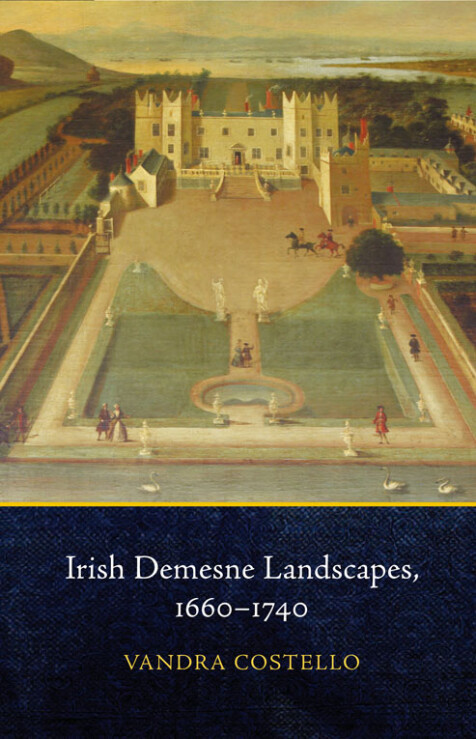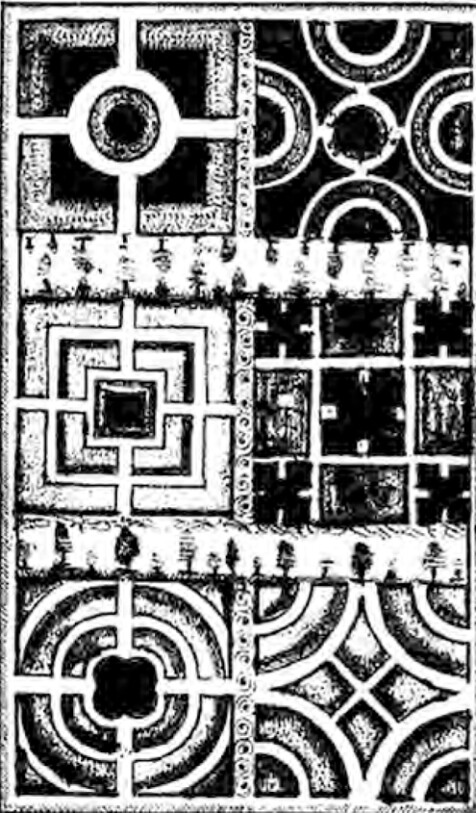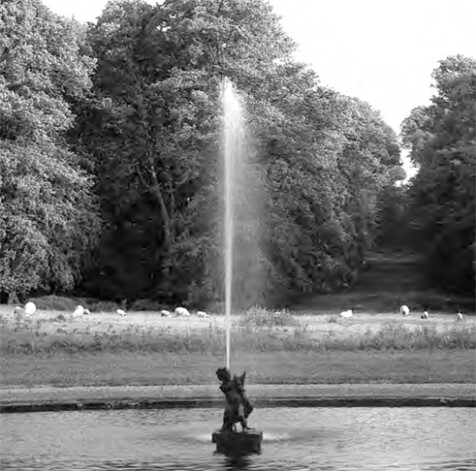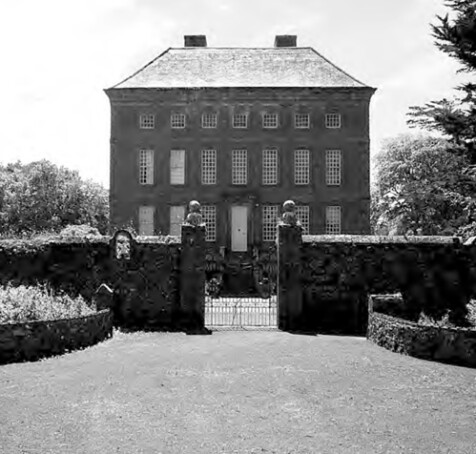Irish demesne landscapes, 1660–1740
Vandra Costello
‘This a very original, in-depth and pioneering study with no parallel in scholarly works on Irish demesnes in a European context … the text is very professional and the work is highly readable for a wide audience. This is a superb contribution to garden history, and I can strongly recommend it’, Rolf Loeber, Irish Economic & Social History (2015).
‘Makes an important contribution to understanding the history of privately owned and managed landscape spaces from the Middle Ages to the early eighteenth century … Costello’s study happily covers the period in Irish landscape history that preceded the blossoming of an interest by landowning elites in the picturesque as a landscape aesthetic … Demesnes and landscape garden design were part of a wave of interest in moral, social and economic improvement … copiously illustrated with diagrams, maps and photographs, [this book] makes an important addition to our knowledge of Irish landscape history and its location in the broader English and European worlds’, Patrick J. Duffy, Renaissance History (2016).
‘A welcome addition to this subject … Throughout, this book is well argued and supported by a generous use of contemporary references and excellent quotations from them … This book will be very useful as reference material for landscape history courses. It packs a lot of information into a relatively small and inexpensive package. It is well and appropriately illustrated throughout … I suspect that this is not a book that will be gathering dust on my shelves but one that I will keep going back to for examples and quotes’, David Brown, Landscape History (2016).
‘A fascinating study of Irish landscapes in a turbulent period … This is a book of fearsome erudition but very readable and Costello is especially interesting on the social and political scene, exploding many myths about Whig v. Tory gardening in the process’, Philip Stephen, Historic Gardens Review (January 2016).
‘In her new book Irish Demesne Landscapes, 1660–1740, Costello introduces us to – among other things – the delightful cult of “saladism” … Costello is in love with this period of Irish history. She adores the baroque and beautiful gardens, of course … Costello’s book is an academic volume, but, because the period is so dynamic and experimental, it is also an engaging read’, Jane Powers, The Sunday Times (June 2015).
‘Tracing the true history of the Irish landscape can be difficult, but one well-researched, factual account of our old demesnes is the recently published Irish Demesne Landscapes, 1660–1740 by Vandra Costello. This book contains excellent illustrations and plans of long lost gardens, while covering a period whose rich social and economic history tends to be overlooked because of the emphasis on the aftermath of Oliver Cromwell’s campaign in Ireland … This book is an entertaining read and a valuable record which can add greatly to the pleasure of learning the history of our own farmland’, Joe Barry, Irish Independent (May 2015).
‘In this most impressive volume, Vandra Costello tells the story of [demesne] landscapes, drawing on a remarkable variety of manuscript sources, often obscure gardening manuals and the full range of recent scholarship … This handsome volume is definitive in its period, and underpins the recent broadening of interest in Irish improvement in the 17th and 18th centuries’, Nigel Everett, Irish Arts Review (Summer 2015).
‘Vandra Costello’s scholarly account is wide-ranging; she deals with the minutiae of demesne life as well as providing a vivid exploration of the backdrop to a long-gone way of life’, Mary Davies, Books Ireland (2015).
‘The history of gentler outdoor pursuits is the subject of Vandra Costello’s Irish demesne landscapes, 1660–1740, which looks at how elements of the Irish landscape were remoulded in the period under study … There is no doubt that the sophistication and beauty of many of the surviving “demesne landscapes” examined by Costello should be valued as public resources in the 21st century … her work is a valuable account of how some of them came into being’, History Ireland (May/June 2015).
‘A detailed study of Irish landscape gardening during the early modern period … Costello’s work is easily navigable and well-referenced throughout. Her clear, concise writing style belies the range and volume of sources reviewed in this comprehensive study which benefits from many accompanying maps and illustrations … The chapters that deal with the various features of the gardens are particularly fascinating and the detailed examples demonstrate the meticulous research that has gone into this work’, Rachel Murphy, Eighteenth-Century Ireland (2015).
'Ambitious in its scope, it sheds welcome light on a rather neglected, not quite dark age. Much in this is new and unfamiliar: for example, the available and most popular varieties of shrubs, trees, fruit, flowers and vegetables. It inventories the development in Ireland of features like canals, fish-ponds, fountains, deer-parks, duck decoys, rabbit warrens. There is also interesting information about skilled gardeners and their wages and backgrounds, as well as the development within Ireland of specialist nurseries and suppliers of seeds', Toby Barnard, University of Oxford, author of Making the grand figure: lives and possessions in Ireland, 1641–1770 (2004).
‘The book deals in depth with a short period in Irish garden history, one in which formal, symmetrical gardens were fashionable here as they were on the continent and in England … Demesnes were, among other things, places for retreat and leisure pursuits away from the cares of the wider world. An admirable scholarly study’, Mary Davies, The Irish Garden (May 2015).
‘Irish Demesne Landscapes charts the history and development of formal gardening in Ireland with a close examination of the grand geometric style that was so fashionable at the time … This lightly but appropriately illustrated book is hugely detailed and will furnish the connoisseur of old Irish gardens with much information that is new and very well presented’, Hortus (summer 2016).





